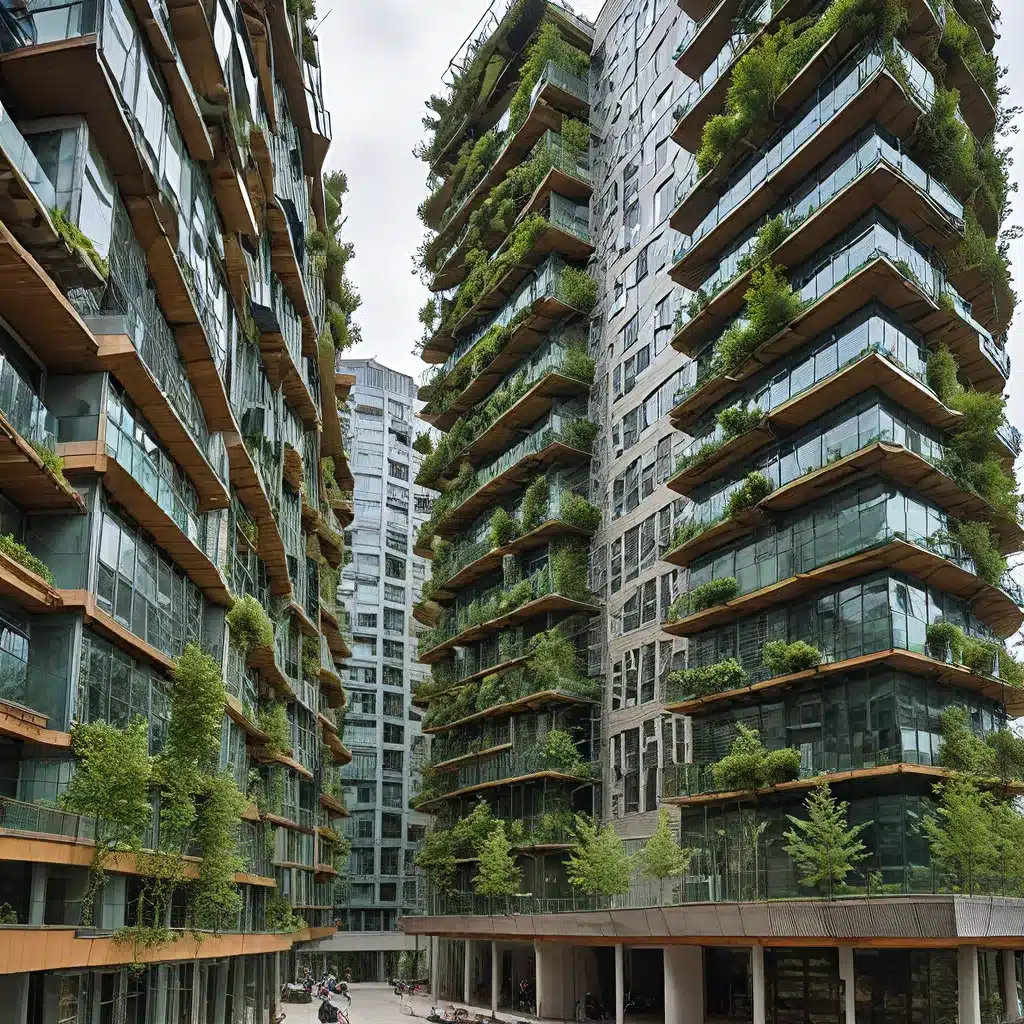
The Green Revolution in Construction: Building a Brighter Future
I’ll never forget the day I stumbled upon Apple Park in Cupertino, California. As I wandered through the grounds, marveling at the seamless integration of cutting-edge technology and breathtaking design, I couldn’t help but feel a surge of excitement. This was a glimpse into the future of construction – a future where sustainability and innovation go hand in hand, shaping the very buildings we inhabit.
The construction industry has long been a pillar of progress, but in recent years, it has undergone a remarkable transformation, driven by the growing awareness of environmental challenges and the pursuit of a more sustainable tomorrow. As the CEO of a green development company, I’ve had a front-row seat to this evolution, and I can confidently say that the future of construction lies in the seamless integration of green technologies into building design.
The Rise of Sustainable Construction
The construction industry has long been a significant contributor to environmental issues, from energy consumption to waste generation. But the tide is turning, as governments, regulatory bodies, and an increasingly eco-conscious public demand a more responsible approach to building.
Green construction has emerged as a game-changer, with its focus on creating structures and using processes that are environmentally responsible and resource-efficient throughout a building’s life cycle. This encompasses everything from the design and materials used to the construction, operation, and even the eventual deconstruction of the building.
What’s driving this green revolution in construction? It’s a combination of factors, including growing environmental awareness, government incentives and regulations, and the realization that sustainable practices can lead to long-term cost savings and higher property values.
Harnessing the Power of Technology
As I wandered through Apple Park, I couldn’t help but be struck by the remarkable fusion of design ingenuity and cutting-edge technology. This intersection of architecture and artificial intelligence (AI) is a compelling frontier that holds the potential to revolutionize the construction industry.
AI-driven generative design tools can enable architects to explore unconventional design possibilities, accommodating complex constraints and evolving project requirements while pushing the boundaries of architectural expression. Imagine a world where buildings are designed to adapt to changing environmental conditions and user needs, optimizing energy usage, lighting, heating, and cooling in real-time based on sensor data.
But the technological revolution in construction doesn’t stop there. Advancements in robotics and AI-driven construction techniques can streamline processes, reduce costs, and improve safety, accelerating the construction timeline and minimizing errors. Offsite construction, where different parts of a building are fabricated and assembled off-site, is a prime example of how technology is revolutionizing the industry.
Embracing the Green Mindset
As I reflect on my time at Apple Park, I can’t help but be inspired by the way the site seamlessly blends cutting-edge technology with a deep commitment to sustainability. With 80% of the land dedicated to green spaces and 9,000 drought-resistant trees, the campus is a testament to the power of integrating green principles into building design.
This is the future we must strive for – a future where sustainability is not an afterthought, but a guiding principle that shapes every aspect of the construction process. From the materials we use to the energy-efficient technologies we implement, every decision must be made with the goal of reducing our environmental impact and creating buildings that are not just functional, but also environmentally responsible.
Reading General Contractor is at the forefront of this green revolution, embracing a holistic approach to construction that prioritizes sustainability, innovation, and the well-being of our community. We’re not just building structures; we’re crafting spaces that inspire, nurture, and protect the environment we all share.
Overcoming the Challenges
Of course, the path to a sustainable construction industry is not without its challenges. Financing and funding, limited availability of green materials, skilled labor shortages, and higher initial costs are just a few of the hurdles we must overcome.
But I’m convinced that these challenges are not insurmountable. Through collaboration, education, and a relentless pursuit of innovation, we can unlock the true potential of green construction and create a future where buildings are not just functional, but also environmentally and socially responsible.
A Vision for the Future
As I walk the grounds of Apple Park, I can’t help but feel a sense of awe and optimism. This is what the future of construction can look like – a harmonious blend of cutting-edge technology, sustainable design, and a deep respect for the natural world. It’s a future where buildings don’t just consume resources, but actively contribute to the health and well-being of the communities they serve.
And it’s a future that we can all be a part of. Whether you’re a developer, an architect, a contractor, or simply a concerned citizen, we all have a role to play in shaping the construction industry of tomorrow. By embracing green technologies, supporting sustainable practices, and advocating for a more responsible approach to building, we can create a world where the buildings we construct are not just functional, but also a testament to our commitment to a better, more sustainable tomorrow.
So let’s roll up our sleeves and get to work. The future of construction is ours to build, and it’s time to make our mark on the world.
Related posts:
No related posts.




